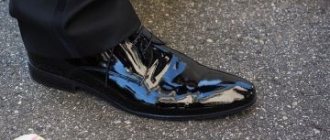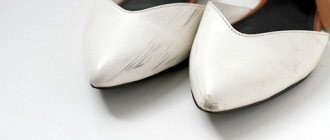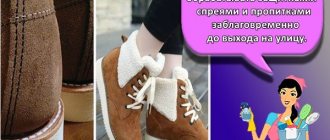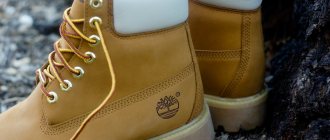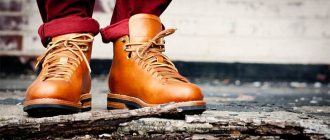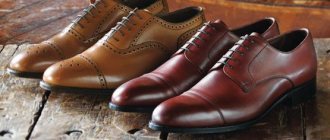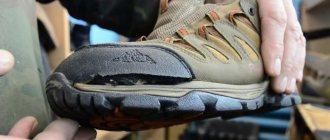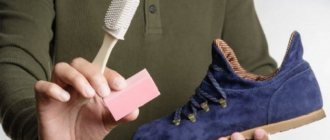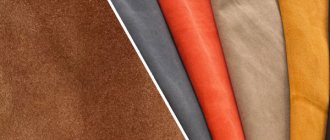- In what cases should shoes be disinfected?
- Disinfectants
- Which way is better?
- General rules for processing shoes
- Safety precautions during processing
- FAQ
- Sequence of actions for onychomycosis and contaminated shoes
- Disinfection for preventive purposes
- Fungus prevention and sock treatment
The fight against onychomycosis is based not only on the use of medicinal drugs, but also on creating minimal conditions for the interaction of human skin and nails with its pathogens. Disinfecting shoes from fungus prevents infection and relapse of the pathology. For this purpose, pharmacy and folk remedies are used. We invite you to find out more about them.
In what cases should shoes be disinfected?
Nail fungus is a serious infection that tends to become latent. It requires a systematic approach, long-term complex treatment. The shoes of a person suffering from mycosis or who have had it can again cause a relapse of the infection, since the causative agents of the disease remain viable for 12 months. To prevent re-infection, it must be disinfected.
Treating shoes with nail fungus should be done every day and with special care. To do this, you can use medications and folk remedies, specific devices and devices with a fungicidal effect.
Both shoes and hosiery should be disinfected.
Useful tips
When antifungal treatment, several important nuances should be taken into account.
- Fungi are very tenacious, but an acidic environment created artificially will help cope with this problem.
- When choosing vinegar as a disinfectant, you should be prepared to have a strong and unpleasant odor. You will have to air your shoes after treatment.
- It is important to treat all socks, tights and other things that come into contact with shoes, otherwise the effect will be short-lived.
- Nail files and scissors must be treated constantly, with each use. After treating the nails, these tools should again be disinfected with alcohol or vinegar.
Disinfectants
There are many industrial, medicinal and folk methods to combat this delicate problem. The list of means used to destroy mycosis of the feet and nails includes the following:
- sprays;
- solutions;
- devices;
- napkins.
The choice of one or another remedy depends on the neglect of the pathological process, financial capabilities and the material from which the shoes are made. Let's take a closer look at these tools.
Disinfection sprays
Mycostop. A drug that is active against all known pathogens of fungal infections. It is not only convenient to use, but also safe for things and shoes, as it does not cause any harm to them.
Mycostop is applied directly to the inside of shoes, presumably infected with fungus, and to skin with diagnosed onychomycosis and candidiasis. To completely destroy the infection, shoes or boots should be treated with the drug at least 5 times. It is recommended to carry out manipulations at night.
The cost of Mycostop in Russia is 250 rubles, in Ukraine - 110 hryvnia.
Dezavid. A broad-spectrum disinfectant produced in the form of aerosols. The drug helps to destroy fungal infections not only in shoes, but also on human skin.
Dezavid acts quickly: the disinfection effect occurs literally a few minutes after treating shoes, boots and boots. The drug is safe for humans, including those with allergies.
In Russia, the cost of this product is 130 rubles per 150 ml bottle, in Ukraine - 38 hryvnia.
Disinfectant solutions
Bitsin. An effective drug, produced in liquid form, which has pronounced antifungal properties. It is used to combat onychomycosis pathogens and sweat odor.
The drug has a prolonged effect. Its activity remains for 30 days after treatment of shoes. The product can also be used to disinfect residential premises.
Bitsin solution is prepared before use. The remaining composition can be stored in a tightly closed container for 14 days.
Making the product is easy. To do this, pour the ampoule with the drug into a bottle of water, which is included in the kit, and spray the resulting solution onto the surface of the shoe.
The price for Bitsin is 100 rubles in Russia and 60 hryvnia in Ukraine.
Formidron. An antifungal agent that destroys infection spores and sweat odor. Available in liquid form. The drug does not damage wardrobe items, so it is suitable for any shoes, including suede. Formidron is also used to treat onychomycosis and excessive sweating of the feet.
The cost of the solution ranges from 35 rubles in Russia and 16 hryvnia in Ukraine.
Chlorhexidine. A drug that is active against dermatophytes and yeast fungi. The product in 1% concentration destroys the causative agents of onychomycosis. It is applied to the inner surface of the shoe in a small amount and dried thoroughly.
Chlorhexidine is sold at an affordable price - 40 rubles in Russia, 15 hryvnia in Ukraine.
Miramistin. A popular remedy with a wide spectrum of action. It fights pathogens, including pathogens of onychomycosis at the cellular level.
The drug can be used for preventive treatment of shoes and the skin of the feet when there is a risk of infection with nail fungus, for example, after purchasing new shoes. The drug is used by analogy with Chlorhexidine.
You can buy Miramistin at any pharmacy. The cost in Russia is from 236 rubles, depending on the volume of packaging, in Ukraine – from 38 hryvnia.
Chlorhexidine or Miramistin - which is better?
For disinfection purposes, it is equally often recommended to use both drugs. Both Chlorhexidine and Miramistin effectively disinfect shoes from fungal infections without causing damage or unpleasant odor. To determine which product works best, you need to consider their benefits.
Chlorhexidine kills pathogens in full. The product is odorless, does not stain shoes, and does not leave stains on the treated surface. The product can be purchased at any pharmacy at a low cost. Chlorhexidine is economical in consumption - for disinfection you only need a small amount of the drug applied to a cotton swab.
Miramistin has a similar mechanism of action, showing activity against bacterial flora, including pathogens of mycotic infections. Microorganisms die at the cellular level. The drug, like Chlorhexidine, is safe for humans, does not spoil the appearance of the treated shoe surface and copes with its task perfectly, that is, in the pharmacological rating these disinfectants are equal.
But Miramistin cannot be called a cheap drug, and besides, it costs a lot. To disinfect several pairs of shoes, it is advisable to purchase a 500 ml bottle of the drug.
Experts consider Miramistin to be an expensive substitute for Chlorhexidine, although their structural composition is different. Both drugs adequately cope with the task of disinfecting shoes from fungal infections, so you can use any of them to achieve the desired result.
Laina. This drug is more often used in medical practice and everyday life, but it is also effective for treating shoes for antifungal purposes. The product is available in liquid form, colored blue, and has a pine or lemon scent.
With its help you can kill pathogenic microflora, including fungi. After treating the inner surface of the shoe, an invisible layer of active substances remains on it, which become a disinfectant barrier to infection for some time.
Shoes are processed according to general rules. After applying the drug, it should stand for 48 hours, then the shoes are washed and dried thoroughly.
The effectiveness of Laina is comparatively lower than that of analogue drugs. The cost of a 1 liter bottle in Russia is 745 rubles, in Ukraine - 270 hryvnia.
Formalin (formaldehyde). Another antifungal agent that has a large number of disadvantages. For example, the drug is unsafe for human health.
But with just a single use, Formalin at a 25% concentration gives excellent results. The treatment is carried out by analogy with Chlorhexidine or Miramistin.
The price of Formalin in Russia starts from 33 rubles, depending on the volume of packaging, in Ukraine - from 13 hryvnia.
Alaminol. The drug can be purchased by pre-order at the pharmacy in 1% concentration. The product is quite strong.
In order to treat shoes, an antiseptic solution is poured into them and immediately poured back. After this, it is left wet for 1.5 hours, without making any attempt to dry it physically. Then the insoles and shoes should be additionally rinsed with water at least 3 times and allowed to dry again.
The cost of Alaminol in Russia is 256 rubles, in Ukraine - from 113 hryvnia.
Hardware method
In addition to traditional and folk remedies, there are special devices for disinfecting shoes that destroy fungal pathogens using ultraviolet radiation, silver and ozone. Thanks to this, you can quickly and effectively cope with the causative agents of mycotic infections. The devices do not require additional disinfectants, they do not leave behind any foreign odors and do not damage the surface of the shoes.
Such devices are completely safe for humans, animals and the surrounding microclimate. Most devices of this type heat up to a temperature of 70°C. The recommended treatment time is up to 10 hours, which allows you to kill pathogenic microflora in full.
Xenelight. Shoe dryer with disinfectant effect. It is sold complete with two disinfecting devices and moisture absorbers, so you can treat a whole pair of shoes at once.
Xenelight cleans and dries shoes and boots using ultraviolet light and air currents. Approximately 5 minutes is enough to achieve the expected disinfecting effect. The device helps destroy fungal microflora almost 100%, eliminating the risk of relapse of mycosis.
The approximate cost of Xenelight is 2800 rubles in Russia and 990 hryvnia in Ukraine.
Timson. According to the manufacturer, this device destroys all pathogens of mycosis. In appearance, the device looks like shoe inserts with an electrical outlet.
Recommended treatment duration is 6–10 hours. The corresponding parts of the device are simply placed in the shoes for the required period of time. After the procedure is completed, the shoes are ready to wear.
You can purchase the device in pharmacy chains, shoe stores and on the Internet. The cost of Timson varies around 1200–1800 rubles in Russia and 660 hryvnia in Ukraine.
Klenz Elfur. Another model of a disinfecting device that is capable of destroying bacteria and fungi both from the inside and outside of shoes. Disinfection is carried out using ozone and silver - powerful antimicrobial agents.
Removal of pathogenic microflora is carried out within 8 minutes. The device does not require liquid or chemical reagents or high temperatures to operate. The process of combating fungal infection pathogens is absolutely safe for shoes and the environment.
The device operates automatically, turning itself off after a fixed time interval. Disinfection can be done at home. According to scientific research, the Klenz Elfur device is able to remove 99.7% of pathogenic bacteria.
The cost of the device cannot be called affordable. In Russia, its price is 37-44 thousand rubles; in Ukraine there is no data on it.
Folk remedies
In addition to pharmacological drugs, there are also traditional methods of disinfection that are quite effective. Simple examples are vinegar, soda, iodine. All of them have a fungicidal spectrum of action, but can harm shoes. Let's list them.
Vinegar. A popular remedy in the fight against onychomycosis. For processing you will need 70% essence; table and apple cider vinegar will not work.
A cotton swab is soaked in the essence, placed inside shoes or boots, wrapping them in a bag for 48 hours. After the time has passed, remove the polyethylene and dry the shoes until the characteristic vinegar smell disappears.
Disinfection with essence is safe for the skin of the feet and nails, but it can cause irreparable damage to shoes. Therefore, the product must be used with caution.
Ammonia. An excellent antiseptic that requires frequent use. If you choose it to treat shoes against fungal infection pathogens, prevention will need to be carried out weekly.
To do this, mix 30 ml of ammonia with ½ glass of water. Wipe shoes with the prepared mixture. Let it dry.
Hydrogen peroxide. The product has a proven fungicidal effect, but not of a prolonged nature. For this reason, shoes need to be disinfected daily.
Soak a cotton swab in peroxide and wipe your shoes or boots with it. If the treatment procedure is performed in the evening, the shoes will be ready to wear in the morning.
Iodine and hydrogen peroxide. Both drugs have antifungal properties. Using them in combination, you can enhance the expected fungicidal effect.
Pour 200 ml of water, 100 ml of peroxide and 5 drops of iodine into a spray bottle. Mix the solution and apply it to the shoes. Treatment should be carried out during treatment of onychomycosis every day and after recovery as a preventative measure 2 times a week.
Tea tree oil. Most essential oils boast fungicidal properties. The leader in this regard is tea tree extract.
To prepare the product you will need 200 ml of water and 8 drops of ether. The resulting solution is used to treat insoles and shoes from the inside. After which it must be dried thoroughly.
If you don't have tea tree extract on hand, you can use other oils with a fungicidal effect, such as fir, juniper, anise or lavender. When treating shoes with essential preparations, you must remember that they will leave a specific odor for some time.
Handy methods of disinfection
In addition to the listed means, disinfection of shoes from fungal infections can be carried out using the following available methods, listed for convenience in the table.
| Additional methods | Description |
| AIR BATHS | Regular airing of shoes in the fresh air, ideally in the cold, for 24 hours helps to destroy the overwhelming percentage of onychomycosis pathogens without the use of additional means. |
| ACTIVATED CARBON | A well-known sorbent that partially absorbs pathogenic microorganisms and unpleasant odors. At night, put 5 tablets of crushed charcoal into your shoes, and remove the product in the morning. |
| BAKING SODA OR FLOUR | They also have sorption capabilities. They are poured into shoes for 12 hours, and then the powder is thoroughly cleaned out. |
| POTASSIUM PERMANGANATE | A weak solution of potassium permanganate, which has pronounced antimicrobial properties, is used to treat the inside of shoes. |
| ALCOHOL OR VODKA | Thanks to the disinfecting composition, they destroy pathogenic microflora and fight unpleasant odors. The product is applied with a cotton swab, after which the shoes are dried. |
| WASHING POWDER | Destroys fungal infections due to increased alkali content. The recipe for using it is simple: 3 tbsp. l. Dilute the powder in 1 liter of hot water, treat the shoes with the resulting solution from the inside and, if they are leather, from the outside. Separately, you can soak the insoles in soapy liquid. |
| LAUNDRY SOAP (TAR) | By analogy with the previous recipe, prepare a washing solution that is active against onychomycosis pathogens due to its pronounced alkaline composition. 2 tbsp. l. soap is ground on a grater and dissolved in 1 liter of hot water. The resulting liquid is used to disinfect shoes. |
| WHITE | Strong antiseptic. In undiluted form, it is used to treat shoes from the inside, after which they are left to dry in the fresh air. |
| SALT | Has sorbing properties. A small amount of the product is poured into shoes or boots for 6–8 hours, after which they are thoroughly cleaned of its residue. |
| HERBS | You will need dried eucalyptus, sage or mint leaves. They are placed in shoes to disinfect them for 24 hours. It is recommended to repeat the procedure weekly. |
Important! If you use the listed recipes regularly and in combination, you can get good results.
Wet disinfectant wipes
Another way to disinfect shoes from pathogens of onychomycosis. At the pharmacy you can purchase ready-made wet wipes soaked in disinfectant liquid. The fungicidal solution used in it does not contain aggressive chemical components, therefore it does not provoke allergies or irritation of the dermis.
Wipes are convenient to use for treating shoes and the skin of the feet and nails. They successfully fight infectious agents, but are inferior in effectiveness to many medications. Allowed in children.
Pharmacy disinfectant solutions
If you do not want to use traditional methods, purchase disinfectants at the pharmacy. The assortment is quite wide.
Chlorhexidine or Miramistin
You can disinfect shoes from nail fungus with Chlorhexidine solution. The economical product is sold at any pharmacy. It is odorless, does not stain shoes, and does not leave stains on the surface. For disinfection, use a 1% solution.
Similar Miramistin is more expensive, but fights viruses and microorganisms more effectively. In addition, the drug is considered safe for the skin and mucous membranes. Children, pregnant women and people with allergies can treat their shoes themselves without fear of side effects.
Both methods can be used. It is useful to regularly wipe things with a solution for prevention.
Formalin
Pharmacies sell a drug called Formidron. The antifungal agent completely destroys pathogenic microflora; one or two applications are enough. This substance is toxic, so do not forget about safety rules when working. Wear gloves and keep children and pets away.
Wet a cotton swab and apply it to your boots or shoes. Place the pair in a tight bag and leave for a day.
Formidron or 15% formaldehyde solution is suitable for use on any shoe.
Which way is better?
It is not easy to give recommendations on a particular method of disinfecting shoes. Each has its own advantages and disadvantages.
The most harmless to human health and shoes are special devices against fungal infections. However, they should be used strictly according to the instructions, not forgetting about fire safety measures, since most of them operate from the electrical network.
Pharmacological disinfectants take second place in terms of effectiveness and safety. Some of the best include Chlorhexidine, Miramistin and Dezavid. They are easy to use in practice and, when used correctly, give decent results. But some are still dangerous to human health, for example, Formalin.
Folk remedies also have antifungal effectiveness, but less in comparison with pharmacy analogues and devices. They are safe for health, but often spoil shoes, leave behind characteristic odors and require repeated use due to the short duration of the fungicidal effect.
How to disinfect shoes using the Xenelight device
Another option is to use ultraviolet rays. The Xenelight shoe dryer has a depressing effect on the fungus and kills it in a few minutes. It contains a desiccant and gas-discharge bactericidal lamps. Battery operated. The shoes do not dry out, they turn off automatically, no power socket is required. If you accidentally step on the device, you cannot get hurt - the lamps are protected by powerful, shatter-proof plastic. Suitable for all types of shoes made of any material.
Price - 2300 rubles.
General rules for processing shoes
Regardless of what means you plan to use - folk or pharmaceutical, in the process of disinfection activities you should adhere to the recommendations listed below:
- Wash the outside of the shoes. Wipe the inside of the material with a damp cloth.
- Remove the insoles and laces. They are treated separately, for example, by soaking in a prepared disinfectant.
- Moisten a cotton swab in the selected preparation, wipe the inside of the shoe with it, making sure to focus on seams, folds and other irregularities.
- After finishing the treatment, the shoes are placed in a plastic bag, closing it in such a way that air cannot enter. Leave for 12 hours.
- After the specified time has passed, the shoes are removed, thoroughly dried and used for their intended purpose.
Attention! Before using any disinfectant composition, it is necessary to check in advance whether its components affect the quality and color of the shoes. This can be done by applying the product to a small area of skin or fabric.
How to use ultraviolet light for shoe fungus
Ultraviolet treatment of shoes against fungus is an effective alternative to chemicals; such disinfection leaves no chance for disputes. However, this method is more expensive and is most practical to use when it is necessary to process a large number of pairs. For this purpose, there are UV devices Timson and Xenelight, which completely neutralize the treated surface from pathogenic strains, including mycosis.
There are 3 main types of devices for treating fungi with ultraviolet light:
- Timson. The device operates from the mains, special inserts - dryers, are placed in shoes for 6-8 hours. They need to be placed closer to the sock, where the spores are concentrated. After one session, the shoes will be disinfected.
- Xenelight. The difference from the previous device is its lightning-fast action - in just 5 minutes the manufacturer guarantees the complete destruction of microbes and fungus. To work, place the inserts in the shoes along with the desiccant absorbers that come with the kit. The advantage of this device is that it operates on batteries; it does not need to be connected to the network.
- Klenz. A professional device, its appearance resembles a miniature microwave oven. The operating principle is based on exposure to ultraviolet radiation.
The use of devices for treating footwear against fungus has many advantages - speed of action, 100% efficiency, and after the procedure there is no need to dry it. These qualities are justified by the high price, especially if the infection affects several family members. Also, this method is most optimal for disinfecting children's shoes or for sensitive skin. However, doctors recommend combining it with chemical methods of getting rid of fungus.
Safety precautions during processing
When disinfecting shoes, the following rules must be observed:
- Protect your respiratory tract and skin with a respiratory mask and gloves.
- After finishing treatment, wash your face and hands with soap.
- If the components of the disinfectant come into contact with the skin, they should be washed with plenty of soap and water. If the drug gets on the mucous membranes, they are also washed, but without the use of detergents, with additional sodium sulfacyl instilled.
- If the disinfectant gets into the stomach, it is necessary to rinse it and undergo symptomatic therapy. In case of poisoning, seek emergency help.
If you follow all the recommendations for disinfecting shoes, you can not only achieve what you want - kill the causative agents of onychomycosis, but also eliminate extraneous unpleasant odors from sweat, animals, etc. Upon completion of such treatment, it will no longer be a source of infection.
Advantages and disadvantages of antifungal agents
Like other antifungal drugs, shoe sprays have their own positive and negative characteristics, which you need to be aware of before using them. Antimycotic solutions have the following advantages:
- high efficiency provided regular use;
- possibility of spraying in remote corners of closed shoes;
- creating a protective barrier that prevents relapses;
- cessation of activity of pathogenic microorganisms;
- immediate neutralization of unpleasant odors;
- minimizing contact with skin;
- complex impact;
- lack of strict dosage;
- simplicity and ease of use;
- safety;
- acceptable price.
Important!
Antifungal sprays are available without a dermatologist's prescription, which means that you don't have to waste time visiting a specialist to purchase the product.
The disadvantages of sprays include:
- presence of contraindications for use;
- duration of the therapeutic course;
- high consumption of the drug;
- ineffective when used as a single agent.
FAQ
How to disinfect as quickly as possible?
Disinfecting wipes, for example, Trilox, will help disinfect shoes for preventive purposes in a short time, literally in a minute. But this method is recommended for use in extreme conditions, in particular when visiting a sauna or bathhouse, where it is not possible to use other disinfection methods.
At home, it is better to use special disinfection devices that are more effective. Within a few minutes or hours, depending on the chosen device, they help get rid of all pathogens without wasting additional time on drying and airing shoes, and, therefore, harming them.
How do you know that disinfection has been carried out sufficiently?
No one will be able to understand this immediately after the processing procedure. The disappearance of an unpleasant odor does not mean that the disinfectant has fully helped. Therefore, it is recommended to repeat the treatment periodically for preventive purposes - at least once a week when it comes to treating a mycotic infection of the feet, and more often when using folk recipes.
The absence of relapse of pathology is a sure sign of the effectiveness of the chosen method.
How not to ruin your shoes?
To ensure the safety of the product used, it is necessary to test it in advance on a small area of leather or fabric of shoes or boots. As a rule, special disinfection devices and pharmacological preparations do not have a negative effect on this item of clothing. Of course, there are exceptions, so it’s better to play it safe and check the reaction of the shoe finishing to the selected antiseptic.
How long after treatment can I wear shoes?
The answer to this question depends on the type of drug or disinfectant chosen. For example, hardware ultraviolet treatment allows you to wear shoes immediately after the disinfection procedure is completed, that is, after 6–10 hours.
If you use pharmacological sprays and solutions, it takes time for shoes and boots to dry and the smell to disappear. It is believed that these measures are enough for pathogenic microflora to completely disappear from the inner surface of the shoe.
How often should treatment be carried out?
Treating shoes against fungus should be carried out several times. We list these stages in a small table.
| Subsequence | Description |
| When the first signs of onychomycosis are detected | Immediately after identifying the infectious process before starting therapy. |
| During treatment of the disease | Once a week or a month, depending on the drug chosen. |
| After confirmed recovery | After finishing taking medications for prophylactic purposes. |
If you neglect to disinfect shoes at any of these stages, the likelihood of a recurrence of infection increases to 100%.
Is it possible to get fungus through shoes?
Of course, there is a risk and it cannot be called low. It is not necessary to visit swimming pools or saunas to catch a mycotic infection. Infection occurs through shoes in the following cases:
- Wearing used shoes or boots. This often happens when purchasing wardrobe items second hand or wearing them for family members. This also includes trying on in a store.
- Having to walk in the same shoes for long periods of time, especially during the winter months. This fact becomes an impetus for the development of fungal infection in conditions of high humidity, heat and lack of adequate air access.
Let's sum it up
Each person can independently choose the method and preparation for treating shoes against fungus. Many people choose protection in the form of cotton socks, while neglecting disinfection. However, in this case, it is better to play it safe and have your shoes treated for fungus in a timely manner.
It is quite difficult to independently choose how to treat shoes against fungus at home and which antifungal agent to use. In this case, you can seek advice from your doctor. The specialist will tell you about the benefits of antifungal agents and indicate the need for this procedure.
It is important to understand that treating socks will not give the desired result. It's better to throw away all your old socks and buy new ones. Antifungal agents will destroy spores of pathogenic bacteria and make shoes fresh. You no longer have to worry about unpleasant foot odor.
Tell everyone:
Sequence of actions for onychomycosis and contaminated shoes
Treatment of this disease is based not only on the use of external and systemic drugs with an antifungal effect. A component of therapy is the disinfection of shoes, since without it one cannot count on the success of the practiced measures.
By properly treating shoes, the likelihood of infection recurrence is minimized. For this purpose, products are used that effectively fight nail and foot fungus.
Before disinfection, shoes are thoroughly washed to remove visible dirt, dried and protective gloves are put on hands. The inside of shoes or boots is wiped with a swab dipped in a disinfectant, treated with a spray, or a special device with ultraviolet radiation is inserted - the disinfection technique will look individually depending on the chosen method.
The insoles are removed and additionally wiped with an antiseptic on both sides. After this, if there are no other recommendations in the instructions, the shoes are thoroughly dried and ventilated, and they become ready for further wear.
Special preparations
You can disinfect shoes using special antifungal drugs, which are sold in large quantities in pharmacies.
Mycostop, Gorosten or Dezavid are available in the form of sprays. This is very convenient - just spray the liquid inside the shoe. The treated pair can be put on immediately and is completely safe for your feet. The substances create a thin protective film that prevents the growth of bacteria. The preparations are harmless to humans and hypoallergenic, which makes them suitable for treating children's things.
Bicine is used quite actively. The substance fights bacteria, viruses and fungi and is available in different forms. Follow the instructions and take precautions.
To prevent fungus, you can use wet disinfectant wipes. They are impregnated with an antibacterial solution, which does not allow microorganisms to multiply. The composition does not contain aggressive substances. The wipes are suitable for gentle foot care. Treat your feet in the sauna, solarium, swimming pool. Then infections will bypass you.
Most drugs fall into the budget category. Processing does not require your time and effort.
Disinfection for preventive purposes
Simultaneously with the use of disinfectants to clean shoes from the presence of possible pathogens of onychomycosis listed above, after recovery, it is recommended to use the following tips:
- regularly dry and air shoes and insoles;
- expose the inner surface of the shoe to sunlight;
- periodically treat it with chemicals with a fungicidal effect using a wet method.
Ultraviolet dryer
Fungi actively reproduce in moist environments. A dryer is what you need. Drying your shoes is the best way to prevent the spread of fungal infections. And the smell of shoes and men's boots will always be normal.
Experts recommend purchasing a dryer and using it regularly; in parallel with the device, you can also use medical products.
Dryers are liners with an electrical cord. These devices are inserted directly into shoes, which is an absolutely safe solution.
After a certain period of time (the instructions will say more precisely), the device turns off and is removed from the shoes. Then the shoes can be additionally disinfected, since the dryer only copes with excess moisture, but does not combat spores of harmful moldy fungi.
Doctor's advice! To prevent the formation of fungus in your favorite shoes, you can purchase an electric dryer. This device copes better with moisture than a battery dryer.
Fungus prevention and sock treatment
Compliance with the rules of personal hygiene makes it possible to avoid the development of mycotic infections on the skin of the feet and the surface of the nails. We list its main recommendations:
- Wash your feet in the morning and evening and dry the skin thoroughly. Particular attention is paid to the spaces between the fingers.
- Shoes should be worn from natural materials, comfortable in shape and size. It is strictly not recommended to wear someone else's shoes and boots.
- You cannot walk barefoot in public places.
- Hosiery should be changed daily.
Socks can spread onychomycosis pathogens if not properly cared for. They should be washed exclusively in hot water using washing powder. Then rinse thoroughly and dry in fresh air.
During the treatment of a mycotic infection of the skin of the feet and nails, and after recovery, it is recommended to treat socks with Chlorhexidine. This will allow you to get rid of pathogenic microorganisms in full. You can replace the drug with folk remedies, for example, boil the socks and hosiery in water with the addition of soda and laundry soap for 2 minutes, which is no less effective.
Of course, disinfection should be carried out regularly until the patient has fully recovered and for another month after that in order to avoid relapse of the disease. Which method to choose is an individual question, the answer to which depends on the person’s financial capabilities and employment.
Is it possible to become infected with fungus through shoes?
Fungus is a common condition, especially among men over 40 years of age. This is due to the specifics of some professions - bathhouse attendants, cooks, builders, factory workers. Mycosis develops in the absence of foot hygiene, even if this is a forced circumstance. Excessive sweating of the feet is a recipe for fungal infections. The disease literally “blooms”, because humidity promotes the proliferation of spores. It negatively affects the condition of the skin and nails, causing peeling and flaking. As a result, flakes of dead tissue settle literally everywhere - on the floor, furniture and shoes. The latter case is especially dangerous, because it adheres tightly to the skin, which leads to virtually inevitable infection.
Poor immunity also increases the likelihood of contracting mycosis. Therefore, the fungus is often a concomitant factor of a serious disease - diabetes, for example. In this case, it is extremely difficult to get rid of the infection, because a weak body will struggle to fight. People with weakened immune systems should absolutely not wear someone else’s shoes. Damage to the skin in the form of scratches and hangnails also increases the chances of infection.
Under no circumstances should you wear someone else's shoes in public places! This applies to gyms, showers, baths and even the beach. Sand is an excellent breeding ground for fungus, so it is recommended that you walk on it with your flip-flops on. Its spores can withstand extreme temperatures, so hot sun or frost does not reduce their danger. A simple principle will help minimize the possibility of infection - do not wear someone else’s shoes, at least without socks.
Comment! Statistics say that 25% of the world's population suffers from fungal diseases.
Which vinegar is suitable for treatment
Some folk recipes mention 80-90% vinegar. This is too concentrated a composition and is not suitable for all skin types. Those with overly sensitive or dry skin will not be able to immediately use this essence. Those who experience irritation in response to the use of concentrated vinegar should avoid it altogether. If the negative reaction to the composition is not strong, you can gradually “accustom” the skin: starting with a weak acid, gradually move to a stronger one.
You can use table or apple cider vinegar. The best option is table vinegar 8-9%. It is suitable for almost all patients and causes only a burning sensation, but not severe irritation.
A few words about hygiene
To prevent fungus from growing in your shoes, try to buy products made from genuine leather.
In them, the skin will breathe, air will circulate freely, sweat and moisture (the main allies of fungal spores) will not bother you. After any season, for preventive purposes, treat items with one of the suggested products, dry and fold until the next wear.
Shower regularly, wash your feet with soap and wash your socks after each use. Do not try on other people's things, especially on bare feet. This will help you avoid becoming infected with fungus at home.
How long does fungus live in shoes if you don't wear them?
Dermatophytes are very tenacious. In the environment they can live up to two years, and their spores can live up to ten years. They are not afraid of sunlight, prolonged darkness, or sub-zero temperatures. Only with prolonged exposure to temperatures above 60 degrees do they die. At 100 degrees this process occurs faster.
Therefore, if a pair of favorite shoes has stood untouched even for 2 years, there is no guarantee that the fungus and its spores are no longer there. Each pair sent for long-term storage must be processed.
Every person has available means to disinfect their pair of shoes. If this cannot be done for some reason, it is better to think about a new acquisition.
At what temperature does it die?
Fungi are quite resistant to high temperatures and remain quite viable after contact with low temperatures. Scientists have found that:
- Humid heat at a temperature of 75 ° C causes their death only after 15 minutes.
- A temperature of 90 °C allows you to destroy fungi in only 10 minutes.
- Boiling kills fungi in only 3-5 minutes.
Thus, standard washing in a washing machine at high temperature will not be enough to get rid of fungi on hosiery. You can, of course, wash your socks at a temperature of 90°C, but not all of them can withstand such execution.
